Description: Light greenish beige color with brown to black bands around each scute of the shell. They are somewhat of a high domed tortoise, and most Greek tortoises maintain a “glossy” looking shell through life. As babies, these Greek tortoises look very similar to baby Hermanns tortoises, but with generally lighter colored heads than baby Hermanns have. Southern Ibera greeks are much more yellow than the Northern variety.
Habitat: Mediterranean tortoises, these animals live in scrubland and Mediterranean forests where they come and go from their burrows in order to maintain the ideal temperatures. They hibernate naturally, and will hibernate in captivity if proper conditions are given. As adults, they can safely handle body temperatures as low as 35 degrees during hibernation, and in cold spring or fall months, they will retreat underground to maintain some warmth. Summer highs up to 110 degrees can be tolerated as long as there is a cooler, underground retreat the tortoise can get into. In hot climates, they will spend much of the summer days in burrows or simply buried under an inch or two of earth.
Diet: This tortoise is naturally a browser, eating broadleaf weeds and low leaves from bushes and shrubs. In captivity, Greek tortoises will graze on leafy weeds, dandelion, clover, and most other leafy greens provided to them. As babies, we focus more on feeding them a wide mix of leafy greens (spring mix). Vegetables can be added to the diet for variety, but fruit should generally be avoided or given as no more than 5-10% of the diet.
Adult Behavior: Adult Greek tortoises are active, busy tortoises when the temperatures are in their ideal ranges (60-90 degrees). They are un-aggressive towards eachother in most cases, and can be kept in small groups. The mating habits can create some problems and they sometimes will ram at each other to establish dominance through the ranks. Most will eagerly come to their keepers looking for food once they are comfortable in their environments. They can be good climbers and will make attempts to escape, so perimeter fences should be buried at least 6-12″ underground, and sidewalls 12-16″ above ground will normally contain them.
Our Current Care: During cooler weather or indoors, these tortoises are kept indoors on a cypress and/or coco coir substrate with a humid hidebox that they can get into at night. We raise them in cheap, simple plastic tubs that can be purchased at WalMart or Target, generally 3 to 4 square feet in size for babies. Temperatures in the room fluctuate between 75 at night up to 85 during the day, but we keep the hidebox heated to around 80-85 at night with a heat pad beind it, or a red bulb placed overhead.
Diet consists of spring mix greens with many other leafy greens offered in rotation to that (mulberry, endive, grape leaves, hibiscus leaves, diced cactus pad and we use globe mallow leaves pretty regularly). We like to also add moistened Mazuri LS tortoise diet as well as ZooMed’s Gourmet Tortoise Food a few times a week, usually mixed and mashed into the leafy greens. The addition of the commercial diets take care of most or all of the supplementation needs, or you can sprinkle the food lightly with a calcium supplement 2 or 3 times a week and a multivitamin supplement 1-2 times a week. We also throw a pinch of our herbal hay on top of whatever they are eating almost daily, which adds variety and flavor and scent to everything.
The tortoises are removed from their enclosure and soaked in a separate 1/4″ deep pan of warm water daily or almost daily for 30 minutes each time. We don’t generally use water dishes in the enclosures because of the risk of drowning (yes, we have lost babies to drowning when they flipped over in 1/4″ of water).
Being a desert species, they should have intense lighting, and they need lights on during the day and off at night to maintain a normal day/night cycle. We use full spectrum UVB lights, which we suggest for the growth of pretty, healthy tortoises, and use a ZooMed Powersun bulb in a small part of the enclosure to give them a “hot spot” around 95-100 degrees that they can get into if they want to warm up.
We don’t use the “closed chamber” method (keeping airflow very restricted to increase humidity to the point that clouds form in the enclosure). It is very risky if/when temperatures get below about 80, and mold, shell rot, and respiratory problems become a lot more common in those conditions. We keep them open top in the warm area, and enclosed, warm and humid within the hide (like they would be in the wild). They are free to choose the conditions, temperatures, and humidity levels they want within that setup.
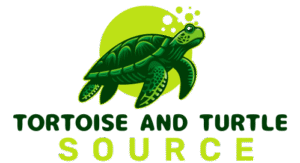
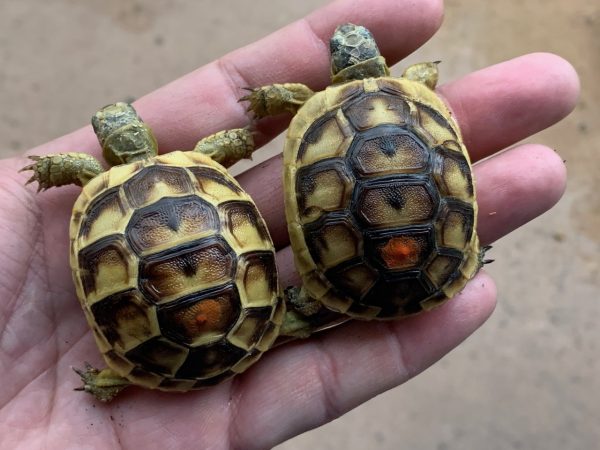
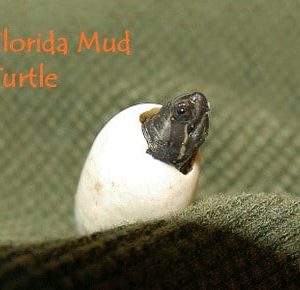
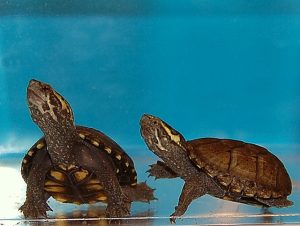

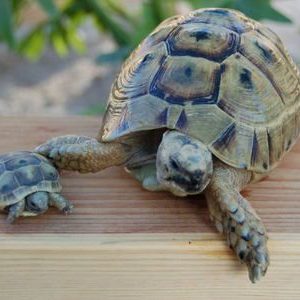
Reviews
There are no reviews yet.